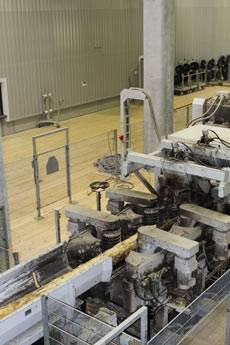BBC News visited Fortress Paper’s facility in Landquart, Switzerland this week to learn about the process of making banknotes.
In a video featured in the BBC’s Business section, Marco Ziethen, the production manager at Landquart, takes reporter Lucy Burton through a step-by-step guide to manufacturing banknotes. From importing, refining and bleaching cotton, Ziethen showed how cotton gets turned into currency. Ziethen also explained how, as the paper is being made, security features are embedded in order to prevent counterfeiting of whatever currency is being produced.
The Landquart facility produces an astonishing number of banknotes each day, said the BBC.
“Each pallet has 18,000 sheets of paper on it. Each sheet will eventually be cut into 54 notes. That is an impressive 972,000 notes on each pallet. The mill runs 24 hours a day and it takes half an hour to make a pallet. So, overall, the mill can turn out around 46,656,000 notes per day,” Burton wrote. “If they are making 500-euro notes that day, the amount of money passing through these doors is simply mind-boggling.”
Vancouver-based Fortress Paper Ltd., has made significant strides in production since they began running the Swiss mill, going from “producing less than 1,000 tonnes of paper per year to 10,000 tonnes per year,” according to the BBC article.
Getting to this point, however hasn’t been easy. In another video posted on their site, Fortress Paper CEO Chad Wasilenkoff said the business provided some initial challenges.
“The banknote and passport industry is a very closed group of people,” he said. “A lot of the companies that are operating in this space have been operating since the 1500s or 1600s so we’re a fairly new entry into this.”
Getting reference orders and new contracts with national banks can be challenging, said Wasilenkoff, but Fortress has made some impressive in-roads acquiring large contracts with countries such as Switzerland to produce the Swiss franc – considered to be an industry standard in security.
In addition to these contracts, the banknote industry is one that is perpetually in flux. As technologies change, national banks have to keep updating security features on their banknotes to curb counterfeiting.
“Fortress hopes that the Landquart mill can help banks to ‘stay ahead of the curve’ and of course – make some money in the process,” Burton wrote.
Read the full BBC article and watch the videos HERE.


